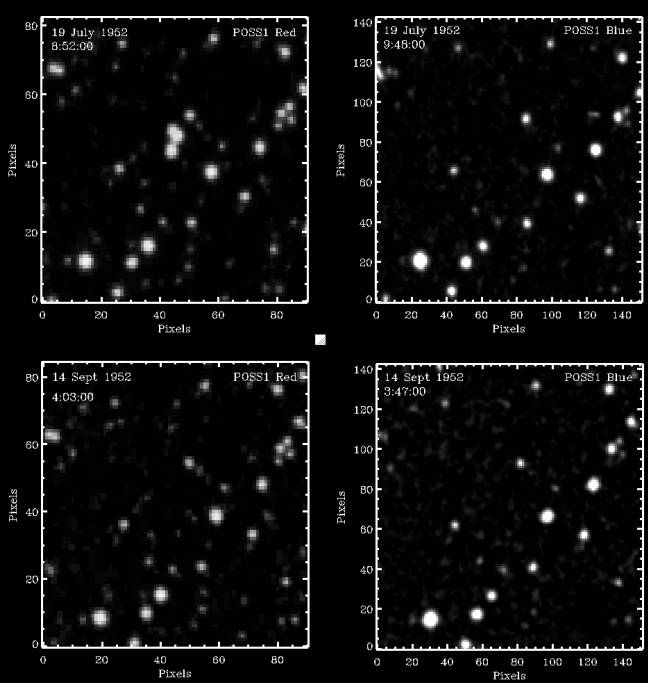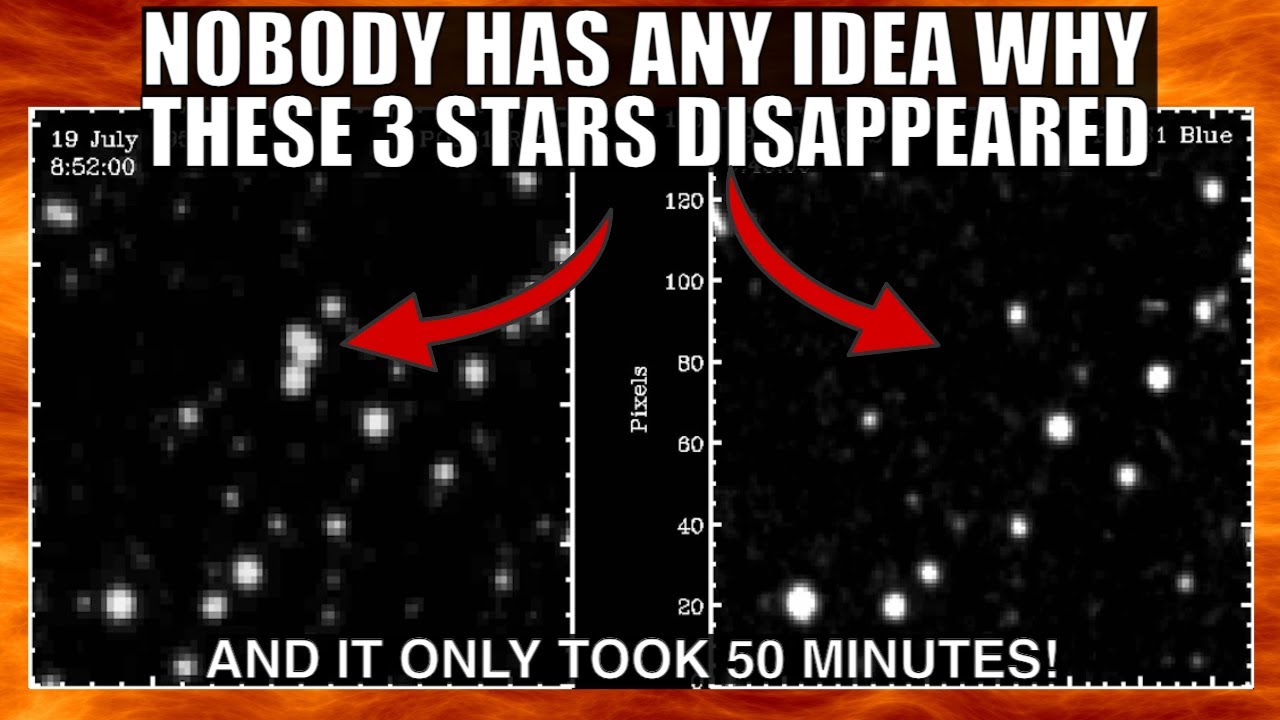In July 1952, photography for the Palomar Observatory Sky Survey (POSS) was underway at the 48 inch “Big Schmidt” telescope at Palomar Observatory. In a typical observing session, two 14 inch square glass photographic plates were exposed in succession covering the same region of the sky: one with a red-sensitive emulsion and the other with a blue-sensitive emulsion, which allowed a coarse estimation of the colour of objects and hence the spectral type of stars.
On 1952-07-19, two successive plates were taken of a region of the sky in the constellation Cygnus, first in red, then in blue, added to the Survey archives, and subsequently made available to researchers worldwide. (In the early 1990s, Fourmilab funded the production of an edition of the POSS on microfiche to make it accessible to amateur astronomers and educational institutions who could not afford [or find the space to house] a full copy of the survey.) Nothing unusual was noted about these plates at the time, and it wasn’t until seven decades later when they were computer-analysed by the VASCO Project (Vanishing & Appearing Sources during a Century of Observations) that something extraordinary was discovered.

On the July 1952 red plate (top left), three star-like sources appear, estimated as around magnitude 15, easily within the range of the POSS, which goes as deep as magnitude 22. On the blue plate, top right, they are completely gone—there is not a shred of evidence of anything. No astronomical source with a black body spectrum could appear only on a red-sensitive plate and not be detected on a blue-sensitive one. This area of the sky was photographed again on 1952-09-14 with the same telescope on the same kind of plates, and nothing was seen on either the red or blue plates.
This is reported in the October 2023 paper “A bright triple transient that vanished within 50 minutes” (full text at link). In it, the authors note:
The three sources are absent in all subsequent exposures of this region during 71 years, including the POSS blue-sensitive image taken immediately after this exposure. The sources have profile shapes consistent with neighboring stars of similar brightness. They exhibit no evidence of peculiar shapes or elongation that would occur with asteroids, meteorites, cosmic rays, photographic plate defects, or aircraft.
On 2023-04-25 and 2023-04-27 the same area was imaged with the 10.4 metre m Gran Telescopio Canarias in the Canary Islands. Nothing was seen at the location of the transient in images with detection thresholds as dim as magnitude 25.5, ten magnitudes or almost 16,000 times fainter than the transient.
What is going on? Nobody knows. Given the exposure time of the plates, a comet or asteroid would have exhibited an elongated trail and would probably have been visible somewhere on the subsequent blue plate (and besides, a triple object of those kinds would be unprecedented). A head-on meteor could produce a stellar-like transient, but the likelihood of three with comparable brightness in the same place and time is of vanishing probability. Plate defects do not produce images with the Gaussian brightness profile of stellar images, and comparison of the transient with nearby stars shows an identical profile, indicating light from a real object that passed through the telescope’s optical train.
Given that the plate was taken during a time when atmospheric nuclear testing was being performed in Nevada, it has been suggested that perhaps a fallout particle landed on the red plate and made the images. But the probability of a radioactive dust particle producing three adjacent images with perfectly stellar appearance is remote in the extreme. (And besides, prevailing winds at the Nevada Test Site blew fallout toward the east, not westward toward California.)
The authors summarise:
In summary, we find no evidence that the transient is anything other than a bona fide unresolved, point source of light. In particular, the profiles show no evidence of a moving source such as an aircraft, asteroid, or elementary particle nor of a defect in the photographic plate.
Could it have been a distant source, perhaps undergoing a flare of cataclysmic brightening event, gravitationally magnified and lensed as multiple images by an aligned massive object which then moved out of alignment before the blue plate was exposed?
Alternatively, the three sources are not separate physical objects but, instead, are images produced by a gravitational lens. One may consider scenarios involving the gravitational lensing of a background explosive event that brightens and dims at optical wavelengths by 10,000x within 50 min. The foreground gravitational lens must have enough structure to produce three point-like images. We do not know what explosive events can provide the decrease in luminosity of 10,000× with a time scale of ∼ 1 h, as required by the observations. Nor do we know what possible foreground mass distributions can produce three images. The sub-hour time-scale of the triple transient raises the question of a possible association with fast radio bursts (FRBs), events that can be associated to magnetars originated after the merger of two neutron stars (Bochenek et al. 2020; Moroianu et al. 2023). In this scenario, the FRB is in the background. It is likely that its optical luminosity increases by a process physically related to the process that causes the increase in luminosity in the radio regime.
This one remains a mystery.
